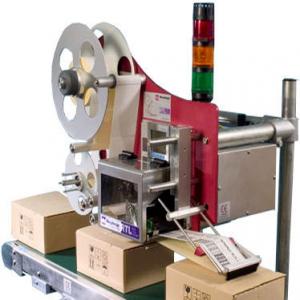In Motion Print & Apply.

Streamline Label-It™ In-motion print and apply labeling system can be a single label printer and applicator for lower volume applications or it can be a series of multiple label printers in order to achieve high through-put. Multiple machines also allow label changes and maintenance of a machine without completely shutting down the line.
We can support many configurations:
Labeling:
Print Engines:
Interested in one of our solutions?
Contact us today so that we can build a solution custom fit for your business needs.
Print engine
The print engine can be taken from an industrial table top printer, it can be a specifically designed module that can be “bolted” onto an applicator or it can be a proprietary element constructed by the printer applicator manufacturer. A print engine’s primary function is to accept data from a computer and print the data onto a label for application. This printing can be accomplished using either the direct thermal method or the thermal transfer method. Both methods heat up very fine elements (up to 600 per inch) on a print head. Direct thermal burns the image onto the face of specially designed label stock. This is the preferred method for shipping labels and is also very popular in Europe. The thermal transfer process utilizes a ribbon coated with wax, resin, or a hybrid of the two. It is then heated and melted onto the surface of the label substrate. Thermal transfer is the most popular method in the United States. The printer knows what to print via data communication from an outside software package, much like common inkjet printers. The software delivers data formatted in a specific layout and the printer reads the format based on its own driver.
Applicator
Media
References:
https://en.wikipedia.org/wiki/Label_printer_applicator

